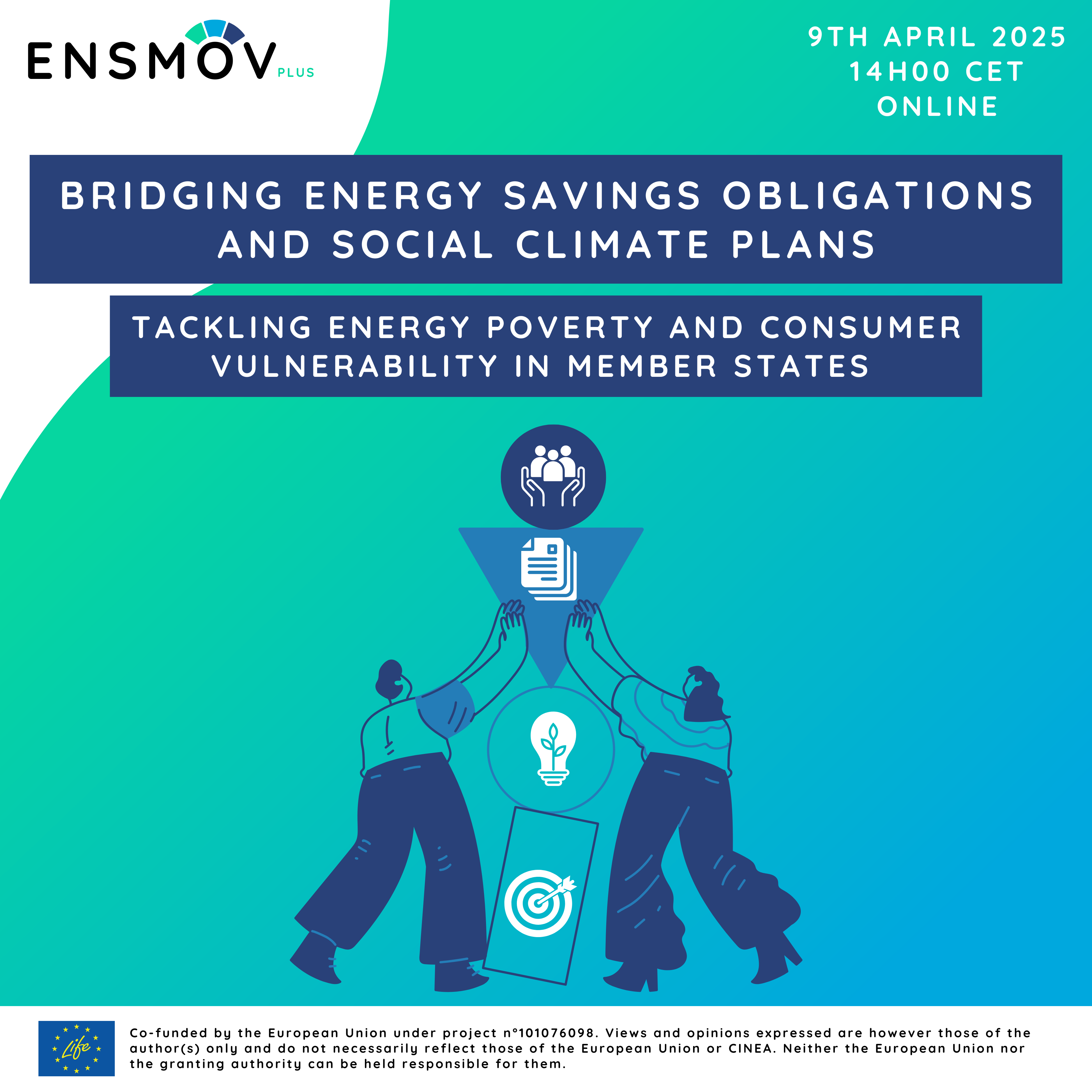- energy efficiency
- Wednesday 9 April 2025, 14:00 - 15:30 (CEST)
- Online only
- External event
Practical information
- When
- Wednesday 9 April 2025, 14:00 - 15:30 (CEST)
- Where
- Online only
- Who should attend
- NECps, Policy makers, researchers, social workers
- Languages
- English
- Organisers
- IEECP
- Website
- https://energysavingpolicies.eu/events/bridging-energy-savings-obligations-and-…
- Social media links
Description
As part of their energy savings obligation and according to Article 8(3) of the Directive 1791/2023 (EED), Member States shall implement energy efficiency obligation schemes, alternative policy measures, or a combination of both, or programmes or measures financed under a national energy efficiency fund, as a priority among, but not limited to, people affected by energy poverty, vulnerable customers, people in low-income households and, where applicable, people living in social housing. Furthermore, Member States shall establish and achieve a share of the required amount of cumulative end-use energy savings required by Article 8(1) among these priority groups.
While the EED provides a definition for energy poverty, the concept of vulnerable customers is less clearly defined and can be determined pursuant to Article 3(3) of Directive 2009/73/EC on the gas market and Article 28(1) of Directive (EU) 2019/944 on the electricity market, taking into consideration the final users.
Finally, vulnerable households, microenterprises and transport users are acknowledged within the context of the Social Climate Fund by Regulation (EU) 2023/955, as they can be significantly affected by increases in energy prices, notably due to the extension of the Emissions Trading Scheme to fossil fuels used in buildings and road transport. These groups are not limited to households experiencing energy poverty. They can, for example, include lower-middle-income households, who would struggle to renovate their homes, replace their vehicle or shift to other transport modes.
Notably, the various EU regulations (on electricity and gas markets, and on SCF) take varying approaches to vulnerability, reflecting distinct priorities, such as energy affordability, income levels, or exposure to greenhouse gas pricing, as in the case of the SCF Regulation.
Objectives
As measures and policies foreseen in the Social Climate Plan will also contribute to the achievement of Member States’ Article 8 targets (especially the sub-target for Article 8(3)), it is crucial to provide clarity and define appropriately the concepts of energy poverty and vulnerability. These definitions must align with the SCF’s intention to target vulnerable households (as discussed above).
This would also facilitate the accurate targeting of households and other groups needing support, as well as the design and implementation of efficient policies and measures.
Moreover, the obligation to report separately the energy savings achieved among priority groups requires the identification of specific and clear elements within the definition of energy poverty and vulnerability, which can be monitored and verified in practice. These should also align with the overarching objectives of the Social Climate Fund and other related frameworks. Acknowledging these aspects, the planned workshop will aim to discuss:
- The synergies or differences between energy poverty in the EED context and energy vulnerability in the context of the Social Climate Funds.
- The assessment and definition of the sub-target for Article 8(3) (share of energy savings to be achieved among targeted priority groups).
- Whether the measures planned in the Social Climate Plans can help achieve the Article 8(3) target, and reciprocally, whether existing energy efficiency measures that contribute to alleviating energy poverty can serve as a basis to develop them further within the Social Climate Plans.

Contacts
General contact
Axelle
- Name
- Axelle
- Organisation
- IEECP
